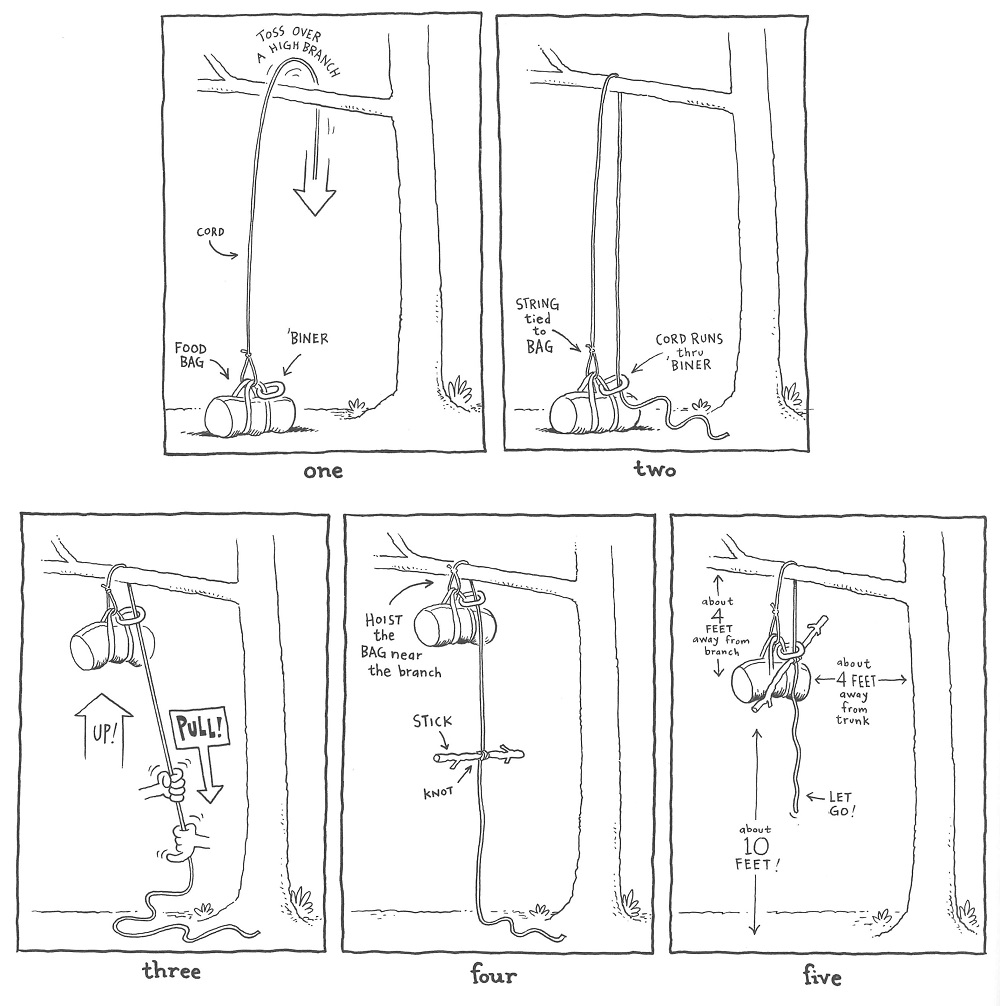Vermont is black bear habitat, but although there are more than 5,000 black bears in Vermont, most people will never see one. The bears here tend to be shy and avoid hikers and campers. If they smell you coming, they tend to leave the area. But once in a while, a problem bear emerges. When that happens, it is generally the fault of humans.
Black bears are omnivores, eating both plants and animals, but really they are opportunists. If your food is out and handy, why wouldn’t they take it? It’s way easier and faster than hunting or foraging. You may have heard the phrase “A fed bear is a dead bear.” What that means is that once a bear starts to associate humans with food, even relocating them is not likely to stop their bad behavior. Problem bears usually have to be euthanized.
In order to protect yourself and other hikers, and to protect the bears, please secure all your food and other scented items while camping. Non-food scented items include trash, toiletries like lip balm or sunscreen, your cookpot, etc. The harder we make it for bears to get our food, the less they will associate food with humans and seek them out.
Secure Your Food
There are multiple options for securing your food from bears at night:
- If a bear box is available at a designated overnight site, use it. Put all your scented items in and make sure you close and latch it.
- Carry your own bear canister and use it correctly – that means leaving it closed and locked at least 100 yards from your shelter, but not near any cliffs or water sources.
- Hang a bear bag from a tree. This method is very often done incorrectly so keep reading for an easy, recommended method.
Hanging a Bear Bag
The “PCT Method” of hanging a bear bag:
- Find a tree with a branch high enough that you can suspend your bear bag from it so that the bag is 12’ in air, 6’ from the trunk, and 6’ below the branch. Put a rock in a small stuff sack attached to 50’ of paracord and throw it over the branch. This may take several tries but you will get better with practice. You might want to tie the free end of the line to something so the whole cord doesn’t go sailing away if the branch you are aiming for is particularly high.
- Remove the stuff sack and attach your bear bag (we recommend a large waterproof stuff sack) to the cord with a carabiner. Clip the free end of the line into the carabiner.
- Pull down on the line and lift the bag all the way to the branch.
- Step on the line to hold it steady and tie a clove hitch around a stick as high up as you can reach – the stick should be at least finger width and 7-8” long.
- Let the bear bag lower until the stick meets the carabiner.
That’s it! If something pulls on the dangling line, the food bag simply goes up. It can’t come down unless the stick is removed, leaving the bear bag in that sweet spot of empty space that bears can’t reach from ground or tree.

To get your bear bag down in the morning, simply pull on the line until you can reach the stick, remove the stick, and then let the bag lower to the ground.
No method is completely bearproof but it’s important to always do the best that you can. Protecting wildlife and keeping yourself and your food safe is a win-win situation.
If you do experience bears getting your food on trail in Vermont, please report it to GMC and to VT Fish & Wildlife.



















Your opinion of the ‘scent-proof bags being offered?